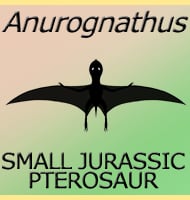In Depth
The name Pareisactus means ‘intruder’, and this came about from the observation that out of several hundred hadrosaur bones, a single fossil of a scapula (shoulder blade) belonging to a rhabdodont dinosaur was found. This scapula was subsequently used to name the genus Pareisactus. Like hadrosaurs, rhabdodonts like Pareisactus were plant eating dinosaurs. However, most rhabdodonts are known from the early Cretaceous, but the presence of a rhabdodont bone in a late Cretaceous deposit shows that some rhabdodonts managed to co-exist with hadrosaurs.
Further Reading
- Pareisactus evrostos, a new basal iguanodontian (Dinosauria: Ornithopoda) from the Upper Cretaceous of southwestern Europe. - Zootaxa 4555(2):247-258. - J. P�rraga and A. Prieto-M�rquez - 2019.









